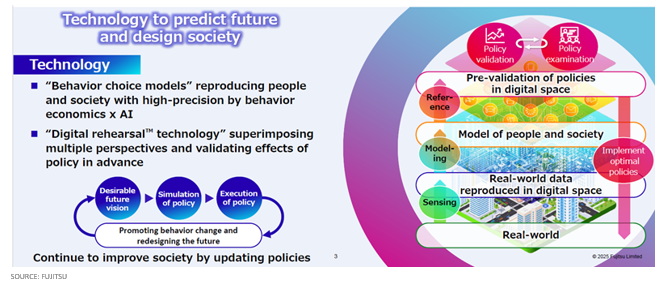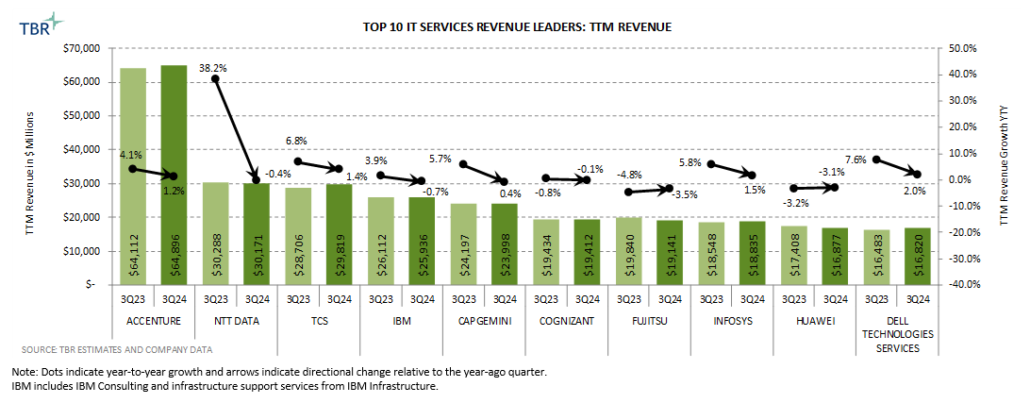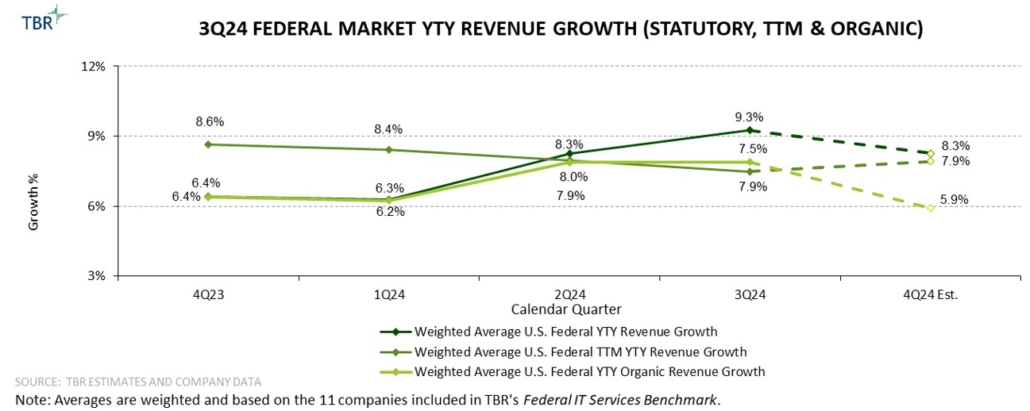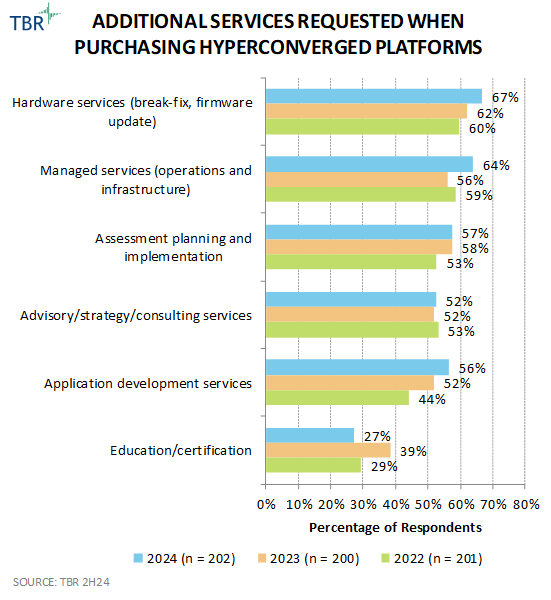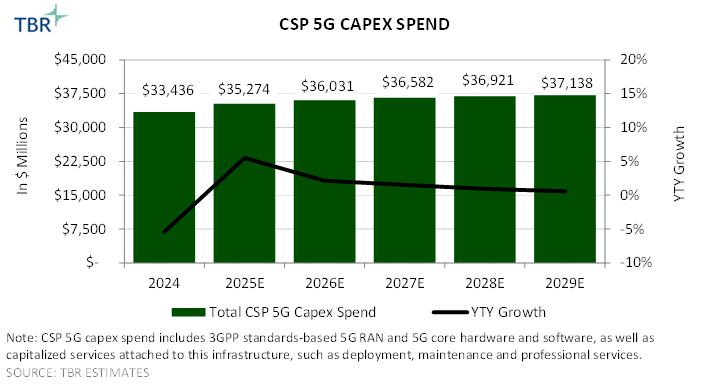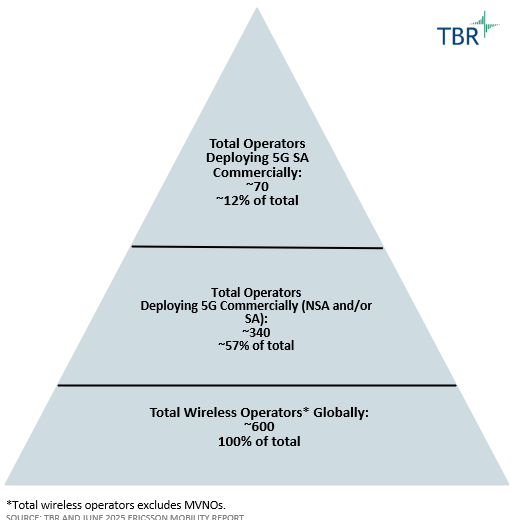TBR perspective
If the key takeaway from Mobile World Congress 2025 (MWC25) in Barcelona, Spain, could be boiled down to one word, that word would be: warning.
Though warnings for the telecom industry have been trumpeted ever since the LTE cycle underwhelmed and failed to bring significant new revenue to telcos, TBR notes that the warning has reached a new level and that the telecom industry faces arguably the most uncertain period in its 150-year history.
There is real concern that endemic, chronic issues that have been challenging the telecom industry for many years could be compounded by the agenda and policies of the new U.S. administration, which has created global uncertainty regarding geopolitics, the strength of nation-state alliances, trade policy, economic development and other key areas, ratcheted up to levels not seen since the Cold War.
Amid this uncertainty, the modus operandi for telcos and their network vendors is to shrink back to basics and cut costs. With catalysts for sustainable, ROI-positive new revenue for telcos remaining unclear, the will to spend more on capex is simply nonexistent. Rather, telcos are becoming more fixated on cost reduction, especially through AI and M&A.
Using history as a guide, deep structural change and regulatory reform, such as that yearned for by the telecom industry, typically only occur in times of monumental crisis, such as severe macroeconomic deterioration, which tends to force governments into action and drive broader restructuring and changes at organizations.
For example, two of the most significant, large-magnitude industrial changes across major societies in the past 150 years occurred during the Great Depression of the 1930s, which reshaped labor and industrial dynamics, and the Great Recession of 2007-2009, which reshaped the financial services industry and real estate market. Telecom will, unfortunately, need a similar economically driven crisis to bring about the changes that the industry desperately needs.
The telecom industry might finally be getting the fundamental, transformational change it needs, and President Donald Trump may well be the catalyzing agent for this change.
Impact and Opportunities
Europe risks reaching a point of no return and dragging its telecom industry down with it
Europe is regressing, and its way of life is threatened unless drastic change is implemented. This was a frequently discussed theme at MWC25. Although Europe has a leading educational system and talented workforce, regulation and taxation in the region have become so restrictive that they are causing chronic disinvestment, brain drain (mostly to the U.S.) and capital flight (again, mostly to the U.S.).
There has also been an acceleration in the decline of birth rates, which portends future, structural headwinds for European society. Though it is not too late to bring Europe back from the brink and reassert the continent as a major powerhouse in the global economy, the window to fix the situation is closing.
For example, TBR’s research suggests Europe is approximately five to seven years behind other first-world economies in key technological areas, such as 5G, cloud, AI and quantum computing, and the gap is widening as the pace of technological change accelerates.
How Europe responds to the impact of the Trump administration will solidify the bloc’s future. Broad-based, structural reform is required to ensure the highest probability of success, with European Union (EU) member states acting more like one, unified bloc that is leveraging the best that each state offers.
As part of this, a regulatory overhaul is required, with increased domestic investment and less restrictive encumbrances to economic development enacted. Additionally, M&A, especially as it pertains to nationally important entities, such as telecom operators, must be allowed in order to attain a competitive level of scale and increase the health and financial well-being of these sectors.
There are simply too many communication service providers (CSPs) in Europe (between 100 and 200, depending on how operating companies [OpCos] and subsidiaries are counted), most of which are sub-scale, impacting their ability to innovate and invest, especially on the world stage.
With three CSPs now remaining in most major countries, Europe’s telcos are minnows in a sea of big fish. More years of the same will further constrict and make the telecom industry even more unhealthy. Structural reform must happen now.
Relevant documents pertaining to the future of the EU, such as the Draghi and Leiter reports, were frequently mentioned at MWC25, and many European influencers and decision makers are using those documents to draw ideas from and promote change.
A potential silver lining for Europe is that Trump’s new world order may usher in a renaissance for the continent, whereby the EU bands together in solidarity and cooperation to address its weaknesses and focus on becoming competitive again on the world stage.
Though the deck is stacked against Europe due to the sheer number and scope of problems that the continent faces, recent events that coincided with the timing of MWC25, such as Germany’s new stance on debt and defense spending, could shake the continent awake from its multidecade slumber and be a watershed moment for structural change.
Growth remains the No. 1 problem for the telecom industry, still with no viable solution
When adjusting for inflation, the telecom industry is shrinking and has been for some time. Though mobile has been offsetting chronic weakness in legacy wireline businesses, even now mobile is exhibiting maturity from a global perspective, with industry-level revenue growth rates flatlining.
While it is true that fixed wireless access (FWA) is a new driver of revenue growth, thanks to 5G, the size of the pie is likely to continue shrinking on an inflation-adjusted basis as CSPs fight to attract and retain new subscribers and engage in pricing tactics, such as offering discounts for bundling (aka convergence) to achieve this goal.
The reality is that network APIs, edge computing (including AI inferencing at the edge), network slicing and other areas frequently viewed as growth opportunities for telcos over the past few years are still not yielding substantial revenue, and the revenue that is derived from these areas is more cosmetic (i.e., revenue positive but lacking profitability and scale) than genuine (i.e., ROI positive) in nature.
AI gains traction and becomes more sophisticated
One area in which leading telcos are making progress is applying generative AI (GenAI), and now agentic AI, to boost productivity and reduce costs. TBR notes that the increased level of sophistication of AI solutions demonstrated at MWC25 shows significant progress since MWC24, a bright spot for the industry.
Customer care and billing remain the most popular domains to apply AI currently, and these areas represent low-hanging fruit, but sales, marketing and, increasingly, the network domain will all be impacted by AI as well. Many use cases and business cases for AI and GenAI in the telecom industry make logical sense and have the potential to produce profoundly significant business outcomes, especially related to cost efficiency.
Technological readiness for and commercialization of AI and GenAI are in process, and much more innovation is in store. Additionally, AI will take on increased importance as telcos navigate the deteriorating geopolitical and economic environment and look to sustain their bottom lines.
5G standalone (SA) adoption remains extremely sluggish, and the gap is widening between leading operators and late adopters
The cost and complexity associated with deploying a 5G core, coupled with the lack of a clear ROI from having a 5G core, continues to stifle the pace of commercial deployment of the technology. While approximately 326 CSPs globally have deployed 5G to date, just 123 have officially signed deals to purchase and deploy a 5G core, and about half of those (62 out of the 123 operators) have not actually begun commercial deployment.
Additionally, of the 61 CSPs that have deployed a 5G core, most are not what some consider a “complete 5G network,” meaning the architecture utilized for the 5G core is not cloud-native. Given that a 5G core is a prerequisite for network slicing, deploying forthcoming 5G Advanced features, and using other key features associated with 5G, such as for B2B use cases, this means most CSPs that have deployed 5G to date are still not able to participate in these nascent areas.
CSPs cannot hope to capture revenue from network slicing, AI inferencing at the edge, or forthcoming use cases enabled by 5G Advanced if they do not invest in the infrastructure needed to provide these services at scale and with low latency. Most CSPs’ cautious capex strategies are hindering their future revenue growth opportunities and risk ceding the value capture from these services to hyperscalers, most likely, or to their own incumbent vendors that elect to bypass the CSP middleman.
FWA is starting to get the attention it deserves from telcos but still has significant untapped potential
TBR continues to believe that FWA represents one of the biggest opportunities for mobile network operators to monetize their 5G investments and drive scalable revenue growth. Though CSP deployment of 5G FWA continues to grow, most CSPs keep underestimating the potential of the technology, likely because FWA ties up a lot of spectrum resources for relatively low average revenue per user (ARPU). There is also an embedded industry bias toward full fiber, though TBR believes this mindset has begun to soften as FWA has proved its staying power.
Technological innovations currently available (e.g., multiband carrier aggregation, beamforming, extended range millimeter wave, non-line-of-sight antenna design, New Radio Unlicensed [NR-U], integrated access and backhaul [IAB], silicon advancements) are likely to bring dramatic improvements in network performance, energy efficiency, and the usability of spectrum to support services such as FWA at large scale. FWA customer-premises equipment (CPE) is also becoming more cost effective to buy and deploy.
TBR maintains that 5G FWA should be thought of as wireless fiber and that the notion of having to deploy fiber to every business and residential premises globally is not only economically unfeasible but also unrealistic from a pure time-to-market standpoint to meet digital equity initiatives. 5G FWA can address these challenges and is a far more realistic and economically feasible technology to help the world bridge the digital divide, bring more competition into the global broadband market and support new use cases.
Changes to the Broadband Equity, Access, and Deployment (BEAD) Program and other stimulus programs in the U.S. to legitimize FWA (and satellite broadband) is a great step forward in leveraging fiber alternatives without sacrificing significant performance and other benefits that fiber-to-the-premises provides. More than 90% of households and most businesses globally do not need more than 100Mbps of broadband speed, mostly thanks to advancements in video compression technologies.
Over the next few years, TBR believes the industry’s perception of FWA will shift from being viewed as an “intermediate, good enough” solution pending fiber rollout to a legitimate fiber alternative, and that ultimately up to 50% of global premises (residential dwellings and businesses) could be addressed with FWA, with the balance being served by Fiber-to-the-X (FTTx) and satellites.
Satellite industry enters the telecom hen house
Though there are significant benefits for mobile network operators (MNOs) (and their customers) to partner with satellite connectivity providers, there is also a growing undercurrent of concern. Led by Starlink, which had a strategically located booth in one of the prominent courtyards of the MWC venue, telco leaders are starting to realize that satellite operators pose a legitimate competitive threat.
Non-terrestrial networks (NTNs) are advancing quickly, with a broader range of smartphones now off-the-shelf compatible with satellite networks, just as they are with terrestrial networks. From a services perspective, satellite connectivity has advanced from basic SOS messaging services to full text support, with voice and data services on the road map for later this decade, all of which can be utilized by the latest popular smartphones.
Satellite broadband is even starting to compete against terrestrial broadband, especially xDSL and FWA, an inflection point made possible by the steady reduction in satellite CPE costs, which historically made satellite connectivity too expensive to be an economically feasible alternative to terrestrial broadband options, as well as significant increases in downlink speeds.
Ultimately, according to TBR’s research, it is conceivable that up to 100 million premises globally could be supported by satellite broadband providers, with Starlink likely to remain the frontrunner in the ecosystem.
Defense industry poised to become a major growth area for network vendors
The Russia-Ukraine and Israel-Hamas wars have demonstrated how warfighting has evolved with technology, prompting a reassessment of military strategy, assets and the production of military-related equipment, especially by the U.S. Department of Defense and NATO members in Europe. Additionally, with the U.S. now retreating from Ukraine, Europe is forced to revitalize its own military industrial complex. All of this incurs more spend on military and defense, with mobile technology set to be a prominent feature of new systems and solutions.
5G, 6G, private cellular networks, edge computing and AI will all be leveraged in some way in modernized military solutions. Of the more than $13 trillion that it is estimated will be spent on defense globally through the rest of this decade, TBR expects many billions of dollars of this amount to flow to the telecom industry, with Nokia, Ericsson and a broad range of other vendors as well as operators providing the bulk of this equipment and services.
Conclusion
Telecom operators remain unhealthy, and the prognosis is deteriorating. One of the first things the industry needs is a comprehensive reassessment of the regulatory environment to give telcos some breathing room and flexibility to accelerate their digital transformation journeys. A catalyzing event, which usually stems from crises, is needed to force the telecom ecosystem to change, and for regulators to create a friendlier economic and competitive environment.
TBR maintains that the telecom industry will look very different by the end of this decade and that significant consolidation will need to take place to create more financially healthy and sustainable telcos. It is possible that Trump and his unconventional policies will be the catalyzing agent to usher in this new phase of telecom industry evolution.
